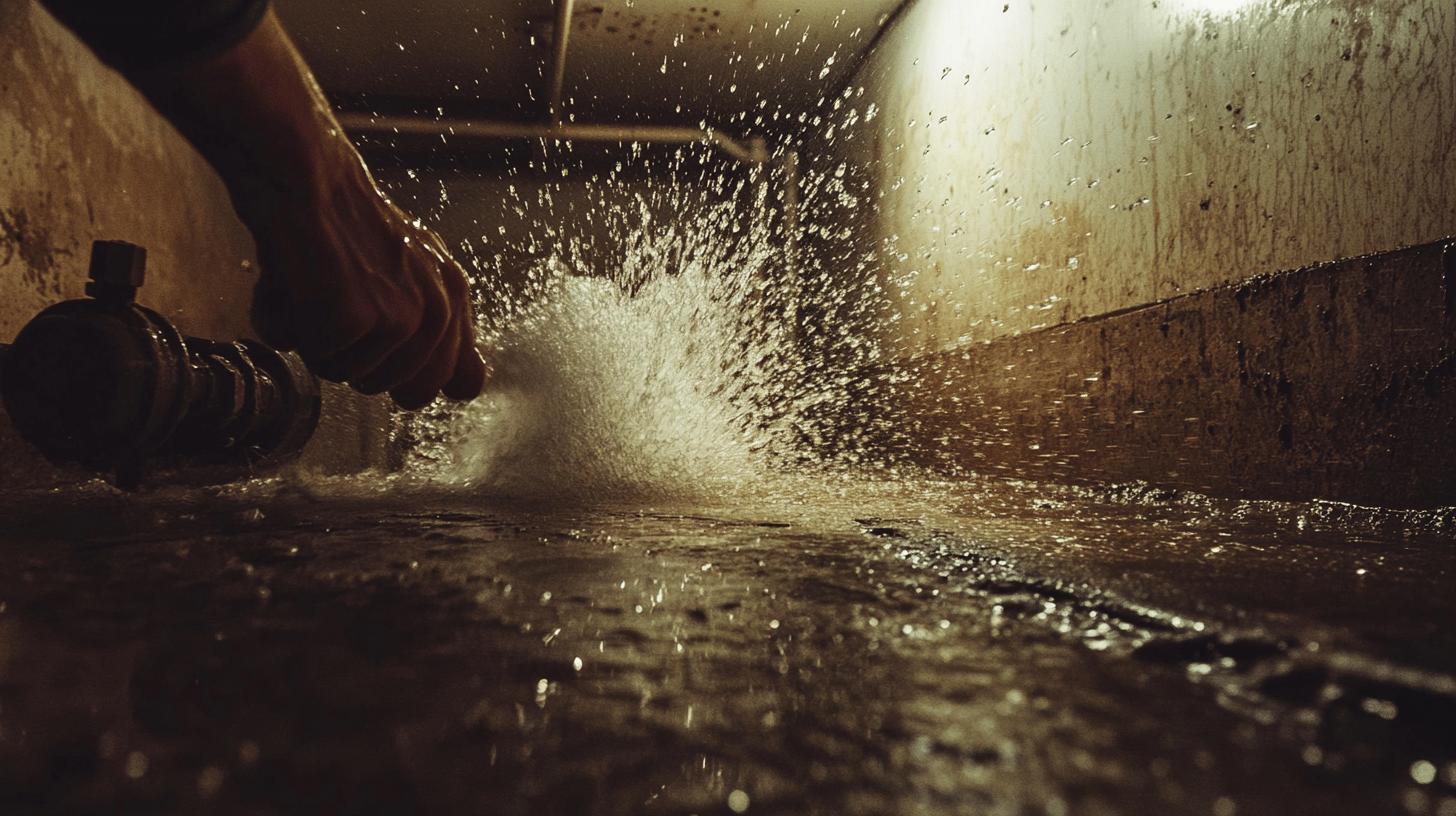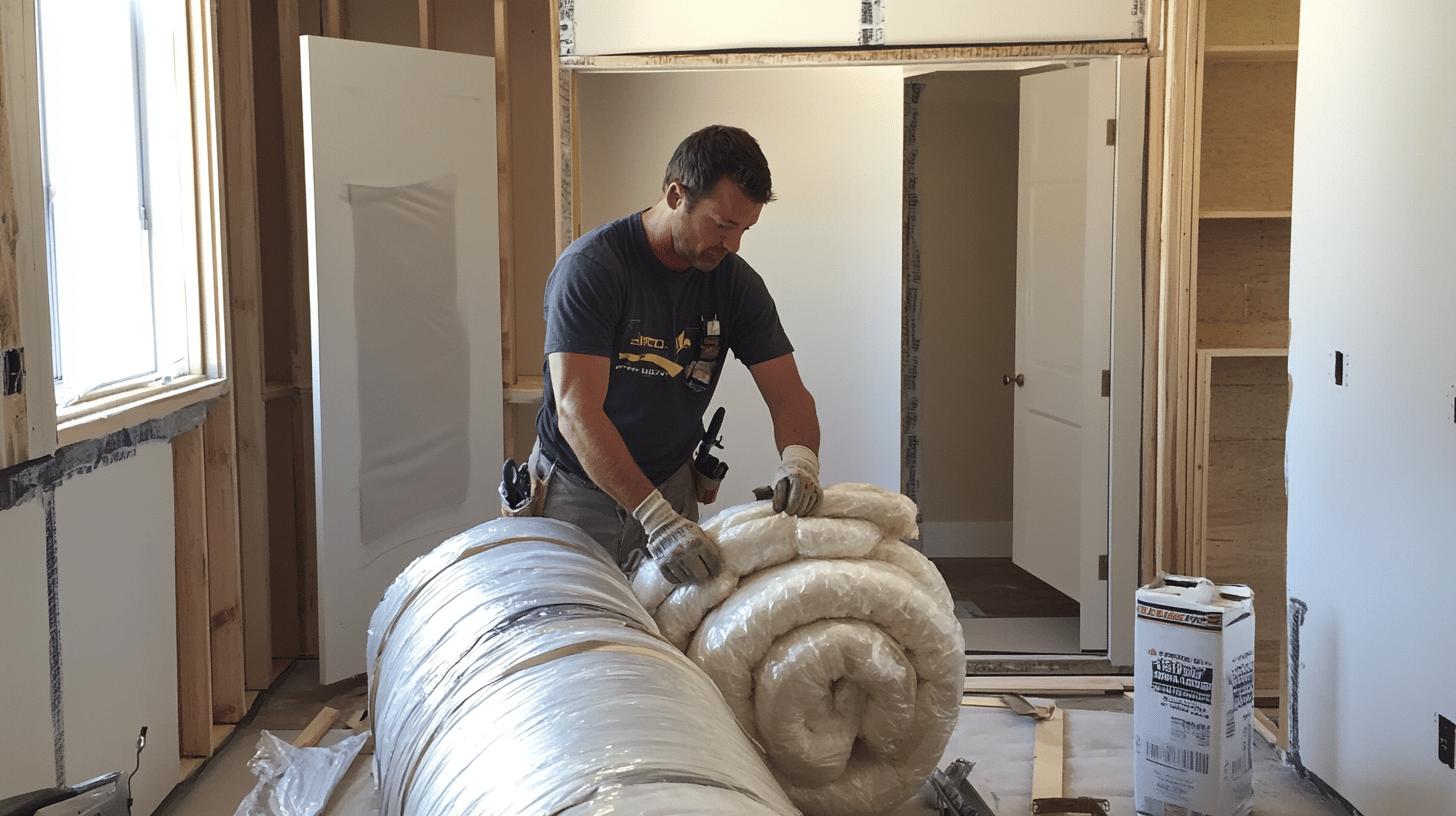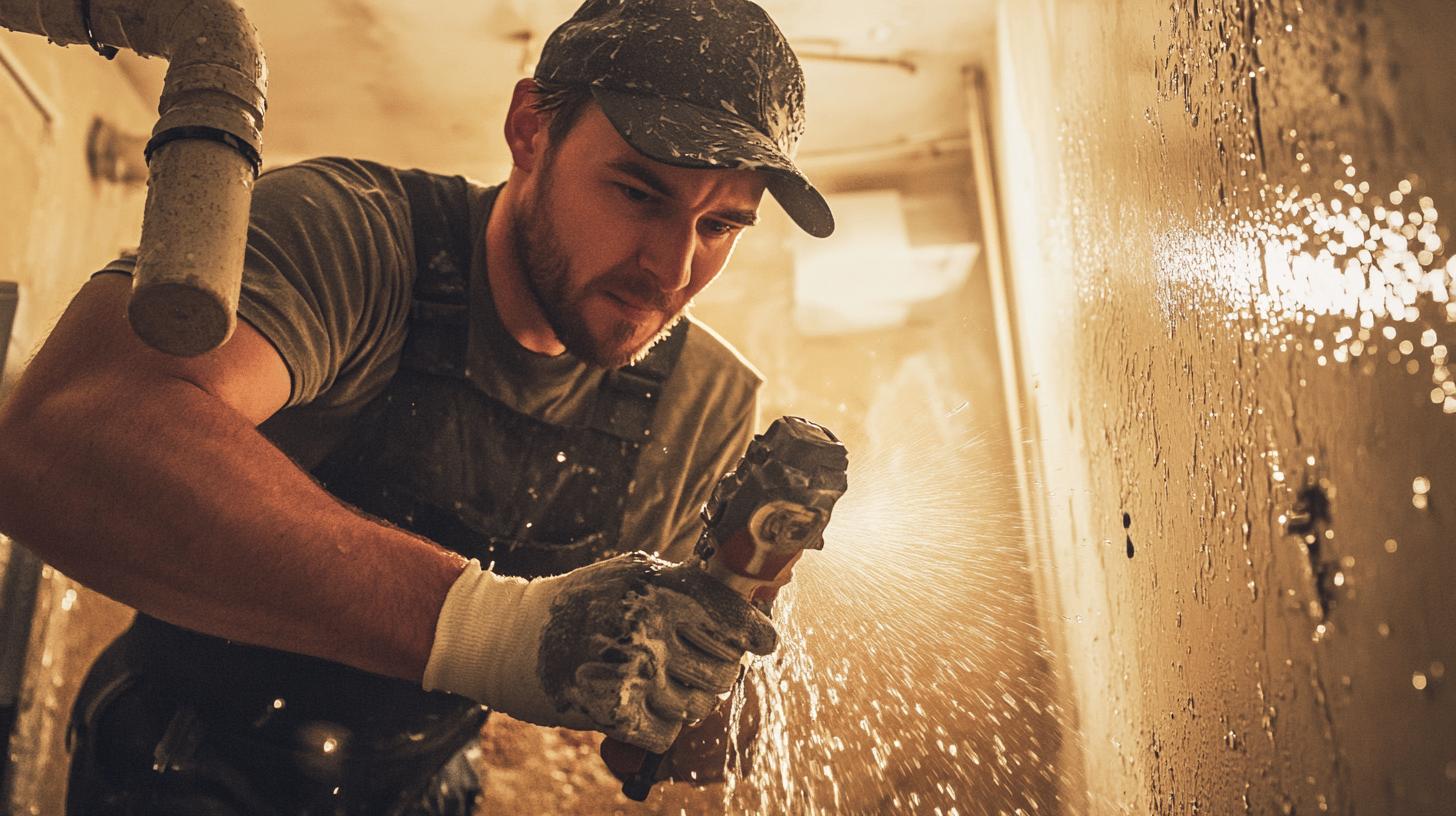TL;DR:
- Frozen pipes can burst due to pressure from expanding ice, leading to water damage.
- Warning signs: fluctuating water pressure, strange noises, discolored water, mold, pooling water, rising utility bills, and water stains.
- Immediate actions: turn off main water supply, call a plumber, document damage, remove water, contact restoration services.
- Preventive measures: insulate pipes, maintain temperatures above 55°F, shut off water when away, let faucets drip, open cabinet doors.
- Thawing methods: use hairdryer, electric heating pad, or space heater safely; avoid open flames.
- Repair costs range from $200 to $1,000; flood damage can escalate to $10,000. Insurance often covers related water damage.
Worried your pipes might have frozen and burst? Ignoring the signs can lead to serious water damage and costly repairs. This article will help you spot the key clues that your pipes might be in trouble. From changes in water pressure to weird noises in your walls, knowing these signs early can save you from a plumbing disaster. Stay alert and protect your home by recognizing the warning signs of a burst pipe this winter. Read on to find out what to look for and how to act fast.
How to Identify a Frozen Pipe Burst
When temperatures drop, the water in your pipes can freeze and expand. This expansion creates pressure, which can crack or burst the pipe. The ice blockage damages the pipe and raises the internal pressure, causing more problems. Frozen pipe bursts can lead to serious water damage, so spotting them early is really important.
Here are some warning signs:
- Fluctuating water pressure
- Strange noises in the walls
- Discolored or foul-smelling water
- Mold or mildew forming within 24-48 hours
- Pooling water
- Increasing utility bills
- Water stains on walls
Spotting these signs early can help you avoid major damage to your home. Changes in water pressure or weird noises from the walls are usually the first hints. Mold or mildew can develop quickly, so don’t ignore any pooling water or rising utility bills. If you catch these signs early, you can take action right away and lessen the impact of a burst frozen pipe.
Immediate Steps to Take When a Frozen Pipe Bursts

When a frozen pipe bursts, it’s important to act quickly to limit the damage. Flooding can cause serious property damage and expensive repairs in no time. The faster you respond, the less impact it will have and the more you can prevent further problems.
Here’s what to do:
- Turn off the main water supply.
- Call an emergency plumber.
- Document the scene with photos.
- Remove water using towels, buckets, mops, and a wet/dry vacuum.
- Contact a water damage restoration company.
To turn off the main water supply, find the shutoff valve, which is usually located in the basement, crawl space, or near the water meter. Turn it clockwise or move the lever to stop the water flow. Shutting off the water quickly helps stop flooding and lowers the risk of serious water damage.
It’s also important to contact professionals. An emergency plumber can assess and fix the burst pipe. Taking photos of the situation is useful for insurance claims. A water damage restoration company can handle the cleanup to prevent mold and more structural damage. These experts have the right tools and know-how to restore your home effectively.
The Role of Professional Plumbers in Handling Frozen Pipe Bursts
Dealing with a burst frozen pipe requires immediate help from experts to avoid major damage and expensive repairs. It’s crucial to consult a professional plumber to handle the situation safely. They have the right tools and knowledge to diagnose and fix the problem quickly. Trying to fix a burst pipe yourself can lead to more damage because plumbing systems can be complicated.
Professional plumbers, like those from Mr. Rooter, specialize in emergencies like burst pipes. They offer upfront flat-rate pricing, so you don’t have to worry about extra charges. Licensed and insured local plumbers provide top-notch service and peace of mind. By hiring professionals, you get their expertise and commitment to restoring your home effectively and efficiently.
Preventive Measures to Avoid Frozen Pipe Bursts

Taking preventive measures is crucial to protect your home from burst pipe disasters. Freezing temperatures can cause pipes to freeze and burst, leading to serious water damage and expensive repairs. By being proactive, you can lower the chances of your pipes freezing and bursting, keeping your home’s plumbing system safe and intact.
Here are some tips:
- Insulate pipes.
- Keep home temperatures no lower than 55°F.
- Turn off the water with the shut-off valve if away for an extended period.
- Let faucets drip slightly during extremely cold nights.
- Open cabinet doors to allow warm air to circulate around pipes.
Insulating your pipes is a great way to protect them from freezing. You can find pipe insulation at most hardware stores, and it’s pretty easy to install. Keeping your home’s temperature above 55°F, even when you’re not there, helps create a stable environment that prevents freezing.
If you’re going to be away for a while, turning off the main water valve can stop water from sitting in the pipes and freezing. Letting your faucets drip slightly on really cold nights keeps water moving and lowers the chance of freezing. Also, open cabinet doors under sinks to let warm air circulate around the pipes, especially those against outside walls that are more likely to freeze.
All these steps together help create an environment where pipes are less likely to freeze and burst, protecting your home from possible water damage.
How to Thaw Frozen Pipes Safely
Thawing frozen pipes safely is important to avoid them bursting and causing major water damage. When you notice frozen pipes that haven’t burst yet, you need to act quickly. This reduces the risk of a pipe bursting from ice expansion. Using safe thawing methods helps you restore water flow without damaging your plumbing system further.
Here are safe thawing methods:
- Use a hairdryer: Apply heat directly to the frozen section, moving it back and forth to ensure even heating.
- Electric heating pad: Wrap the frozen pipe with an electric heating pad, set to a moderate temperature to thaw the ice gradually.
- Portable space heater: Position a space heater near the frozen pipe, ensuring it’s at a safe distance to avoid overheating and fire hazards.
When thawing frozen pipes, it’s important to take precautions to avoid damage or injury. Never use an open flame or blowtorch, as this can crack the pipe or start a fire. Make sure to remove any flammable materials from the area around the frozen pipe. Keep a close eye on the thawing process to ensure the pipes warm up evenly and don’t leak. If you’re unsure or uncomfortable doing it yourself, it’s best to call a professional plumber to handle the situation safely.
Cost of Repairing Frozen Pipe Bursts

Repairing a burst frozen pipe can be expensive, typically costing between $200 and $1,000, depending on how severe the damage is and where the pipe is located. If the pipe is inside a wall, the costs can go up because of the extra work needed to access and fix it. This estimate doesn’t include the expenses related to flooding and water damage, which can add a lot more to the total for homeowners.
| Type of Repair | Average Cost |
|---|---|
| Basic Pipe Repair | $200-$500 |
| Repairing Pipe in Walls | $500-$1,000 |
| Flood Damage Restoration | $2,000-$10,000 |
| Mold Remediation | $500-$6,000 |
Most homeowners’ insurance policies cover water damage from frozen pipes, including damage to walls, floors, furniture, and ceilings. Be sure to document the damage with photos and contact your insurance provider as soon as possible to file a claim. This coverage can help cover repair costs and ease the burden of unexpected expenses from frozen pipe bursts.
Final Words
To identify a burst frozen pipe, watch for fluctuating water pressure, strange noises, and water stains. If you notice these signs, shut off your main water supply right away and call an emergency plumber. Professional plumbers provide the expertise, quick service, and guaranteed work you need to handle the situation.
You can also take preventive measures, like insulating pipes and keeping your home temperature above 55°F, to avoid these issues. If you spot a frozen pipe, thaw it safely using the methods we discussed. Repair costs can vary but are often covered by insurance. Knowing how to manage and prevent frozen pipe bursts can help you avoid significant damage and expenses.
FAQ
How to fix a frozen pipe burst?
To fix a frozen pipe burst, turn off the main water valve, identify the burst location, and call a plumber for proper repairs. Remove standing water with mops and buckets to minimize damage.
What happens if pipes burst from freezing?
When pipes burst from freezing, water expands and cracks the pipe. This can lead to flooding, water damage, mold growth, and higher utility bills.
How long can pipes be frozen before bursting?
Pipes can burst as soon as they freeze. The pressure from expanding ice can crack pipes almost immediately, although it might take hours or days for leaks to become evident.
How to prevent pipes from bursting after freezing?
Prevent pipes from bursting post-freeze by gradually warming them. Use a hairdryer, heating pad, or space heater on the frozen section. Avoid open flames and never leave devices unattended.
What are the warning signs of a burst pipe due to freezing?
Warning signs include fluctuating water pressure, strange noises in walls, discolored or smelly water, mold or mildew within 24-48 hours, pooling water, higher utility bills, and water stains on walls. Identifying these signs early can prevent extensive damage.

